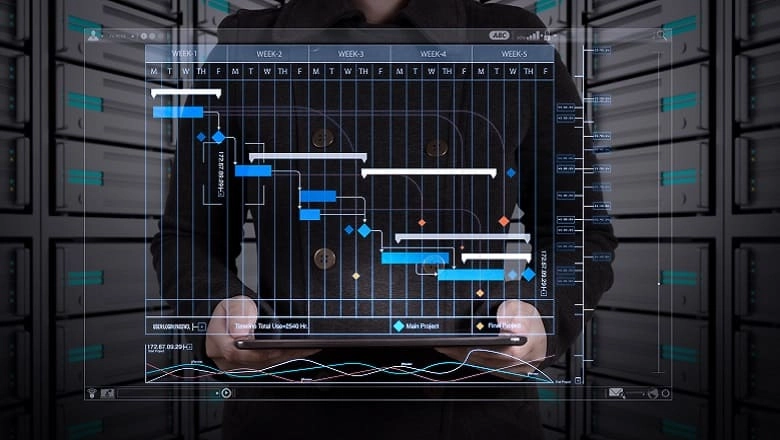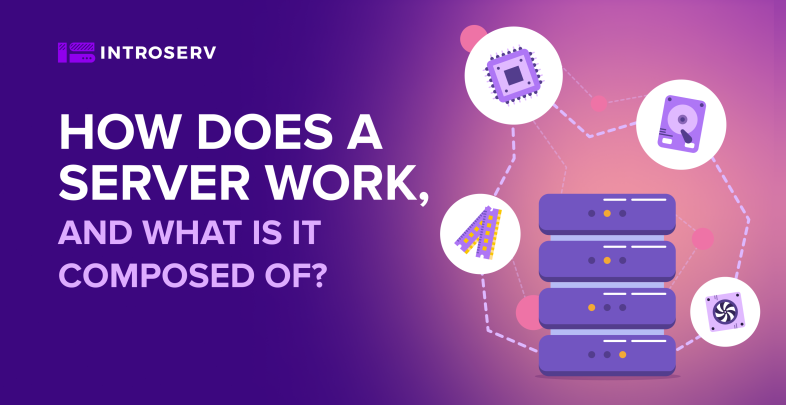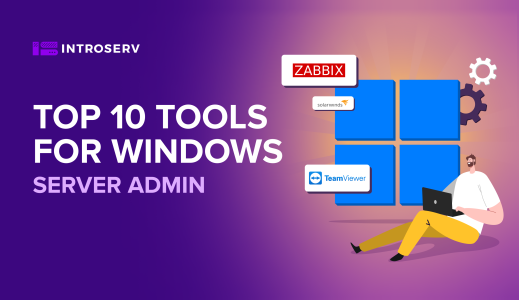After we have got acquainted with what a server is and what is the server needed for, we will analyze how the server works.
To understand the operation of the server, we need to have a general idea of what it consists of. The server contains hardware and software parts. The hardware component is the "hardware", the physical data carrier where the service and target programs are loaded – that is, the software component.
Depending on the type of server design, the appearance of the case varies, but the internal filling differs slightly. We have a kind of panel filled with components that provide the operation and functionality of the server. Since the server requires increased efficiency at the same time as compactness, the components are located as close to each other as possible.
The server consists of the main and auxiliary parts. The main part includes: the central processor/processors, the motherboard, the memory system, the data storage device. Can be added – network card, video card, etc. To improve the quality indicators used: multi-core processors, expanded memory capacity, enhanced hard drives and hard drives, the technical parameters are different from their counterparts in conventional computers. The auxiliary part consists of communication, power and cooling systems. The server must have high fault tolerance and work 24/7, so the systems that support the working climate (cooling, temperature and humidity, power supply, etc.) are no less demanding than the main "stuffing".
In other words, these are "pumped-up" analogues of the components that make up the system unit of a stationary computer.
The software part is entered through a special console consisting of the usual data input tools, such as a monitor, keyboard, etc. Here the corresponding operating system and basic maintenance programs are installed, which later allow remote control. Depending on the tasks and requirements of the client, special applications can be loaded into the software part of the server.
The main tasks of the server

Receive, store, and transmit data. This is the basis for the work of programs and services, the life of computers and other modern communication devices (tablets, smartphones, etc.) on the Internet. Everything that, in one form or another, we find on computer monitors, what works with it in conjunction – relies on the work of servers. The world of computers is based on information (data), and the server is what allows this information to function on the world Wide Web.
Schematically, the process looks like this: the client gives a request-through user-defined and special programs, the request addresses the addressee – the addressee supported by the server gives a response to the request. Exaggerated this process can be compared to the work of an archive or library, where a person receives the requested data stored in the appropriate sections on their shelves. This is the simplest scheme, in fact, the process is more multi-level and complex, mostly because of the programs that provide interactivity to the user of the computer.
Close to the working functions of the server is the concept of "hosting". Hosting is a service that provides access to the server's network resources. This is the "space" in which programs, online services, websites, etc. are located. For example, any site uses hosting services, buying this "space" from the hosting company, which in turn owns physical servers or rents them from data centers. That is why, when the connection with the hosting on which the site is located disappears, the browser informs us about the unavailability of the site.
It is worth noting that not all hosting companies have their own servers at their disposal or have access to reliable data centers. There are more and more hosters working exclusively with cloud servers on the market, bribing with their low cost, but presenting these servers as "dedicated" or "virtual" (more about the differences in the next articles), than misleading their customers.
The server provides streaming support for the Internet, just like any other computer network, and is also the database without which the exchange of information and the performance of programs will be impossible. This leads to the logical conclusion that the maintenance and maintenance of servers requires a high level of responsibility of the owner companies. They require round-the-clock uninterrupted work, on which the vital activity of many areas of modern life depends. And so choosing a company that provides access to server services and hosting is just as important as choosing the right server configuration.






















































